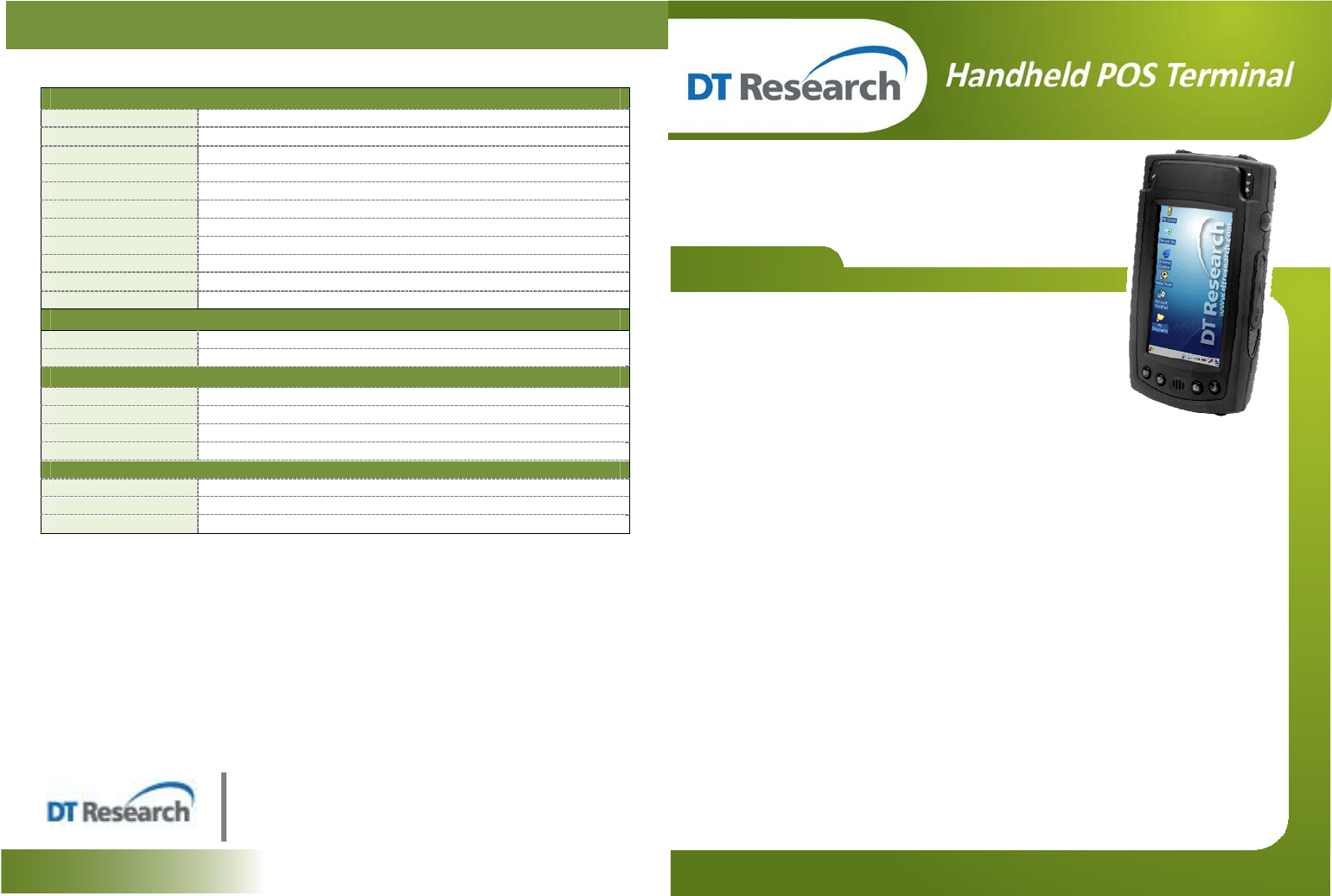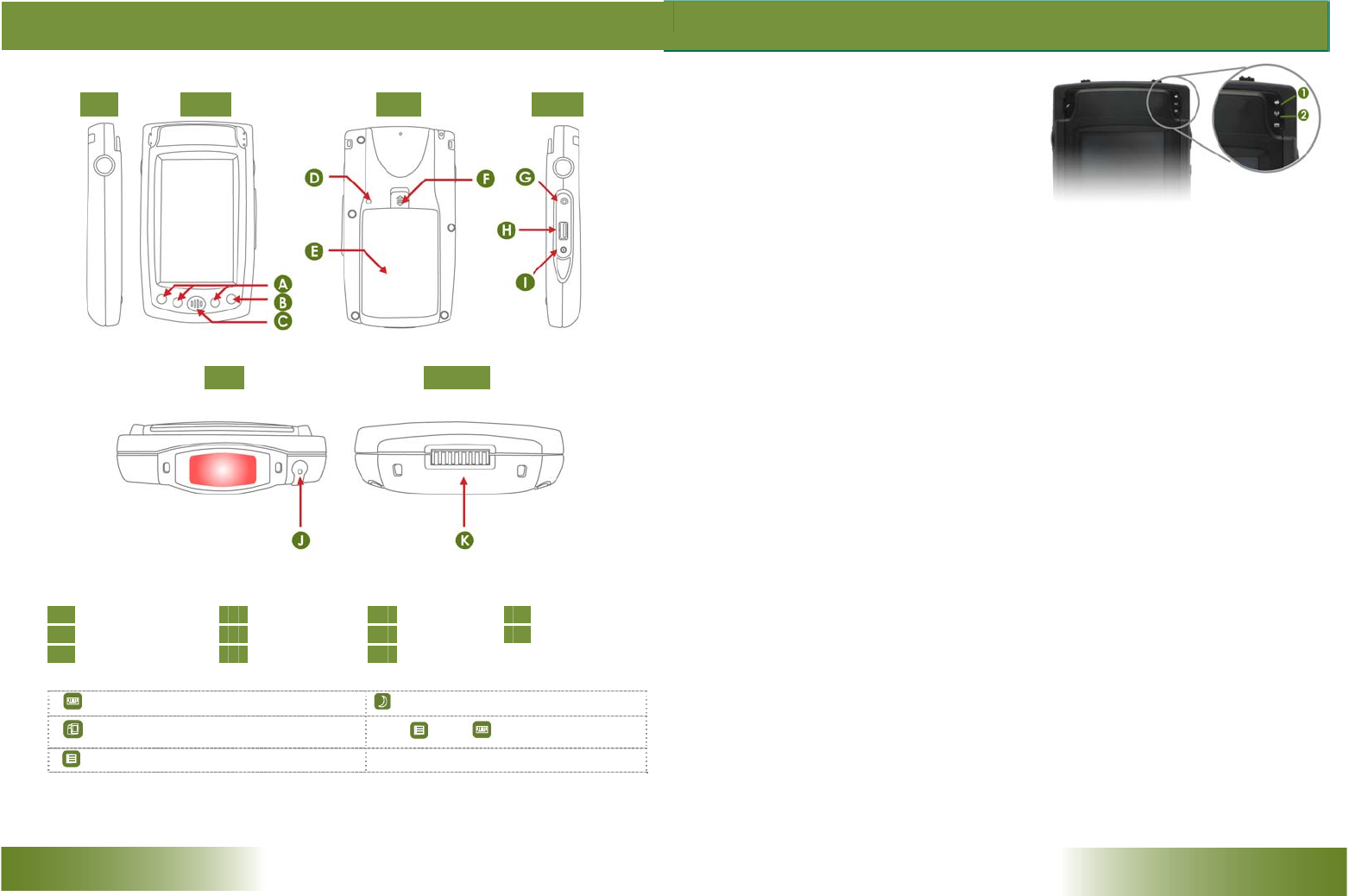Summit Data Communications SDCMSD40NBT 802.11abgn (1X1) + Bluetooth (2.1) module User Manual
Summit Data Communications, Inc. 802.11abgn (1X1) + Bluetooth (2.1) module
Contents
- 1. User Manual
- 2. user manual
- 3. user manual I
- 4. user manual II
user manual

DT430
DT430
BASICOPERATIONGUIDE
ENGLISH
IN
T
R
OD
U
CT
I
O
N
ThankyouforacquiringtheDT430,partofthePOS
Handheldline.TheDT430offersa4.3”outdoor‐viewable
display,inacompact,rugged,andlightweightpackage.
TheDT430enablesefficientpoint‐of‐serviceapplications,
inventorymanagement,andfieldservices.TheDT430
Point‐of‐ServiceHandheldprovidestheprecisefeaturesneededtostreamline
operationsandimproveproductivity,dataaccuracy,andservice.
PACKAGECONTENTS
1. OneDT430
2. Onebatterypack
3. Basicoperationguide
4. Styluslanyardandhandstrap
PRECAUTIONS
AlwaysexercisecarewhenoperatingandhandlingtheDT430.
DonotdisassembleanyportionoftheDT430.Itwillvoidanyproductwarrantyon
DT430.
Donotuseanypoweradapterorchargingcradleotherthantheoneprovidedwith
thedeviceoracquiredfromthemanufactureroritspartners.
Intheunlikelyeventthatabnormalnoise,strangeodor,orsmokeispresent,
immediatelypowerdowntheDT430anddisconnectallpowersources.Please
reporttheproblemtoyourdeviceproviderimmediately.
Productlabelisonthebatterycompartment;itwillbeseenwhileloadingthe
battery.
SPECIFICATIONS
System
ProcessorARM800MHz
RAM512MB
Storage4GBFlash
OperatingSystemMicrosoft®Windows®CE6.0;Windows®Mobile6
Display4.3”TFT‐LCDwithresistivetouch;outdoor‐viewabledisplay
DisplayResolution272x480(WQVGA)
NetworkInterfaceBuilt‐inIEEE802.11a/b/g/nWLANandBluetooth2.1withEDR
ControlSwitchandButton1powerbutton,4frontbuttons
Indicator1power‐onLEDindicator,1WLANenable/communicationindicator
Speaker/MicrophoneBuilt‐inspeakers;1monomicrophone
Input/OutputPorts1headsetjack,1USB1.1host,1cradleinterface(USB2.0andcharging),1DC‐injack
Power
AC/DCAdapterInput:100–240VAC;Output:5VDC,3A
BatteryTypeLi‐ionbattery3760mAh,3.7V
Mechanical
EnclosurePC+ABS,TPR
StylusNon‐electronictip
Dimensions(HxWxD) 6.3x3.4x1.2in/160x86x30mm
Weight0.9lbs/415g
Environmental
RegulatoryFCCClassB,CE,C‐Tick,RoHScompliant
OperatingTe m p e ra t u r e Operation:0°C‐40°C;Storage:‐20°C‐60°C
Humidity0%‐90%non‐condensing
*Specificationssubjecttochangewithoutnotice
DT Resea
r
ch, Inc.
2000 Concourse Drive, San Jose, CA 95131 http://www.dtresearch.com
Copyright © 2012, DT Research, Inc. All Rights Reserved.
DT Research is a registered trademarks of DT Research, Inc.
ENGLISH4

DT430
DT430I/OPorts
.LeftFrontRearRight
TopBottom
A ProgrammablebuttonsBSuspend/ResumeCSpeakerDPower button
E BatteryFBatterypackswitchGAudiojackH
USB
1
.
1
h
os
t
I DC‐inJStylusKCradle
c
onn
ect
o
r
:Enable/disablesoftkeyboard(Programmable):Suspend/Resume
:ProgrammableHold+press :To u c h screencalibration
:SystemUtility
DT430LEDStatusIndicators
1.PowerModeStatusIndicator:
Blue:Deviceispoweredon
BlinkingBlue:Mainbatterycharging
Orange:Lowbatterymode
BlinkingOrange:Extremelylowbatterymode
Off:Deviceispoweredofforinsuspendmode
2.Wi‐FiStatusIndicator:
Blue:ThedevicehasbeenconnectedtoawirelessAP
Blinkingblue:ThedeviceisconnectingtoawirelessAP
Off:Wi‐Fiisdisabled
ENGLISH2 3ENGLISH
FCC Regulations:
This device complies with part 15 of the FCC Rules. Operation is subject to the following
two conditions: (1) This device may not cause harmful interference, and (2) this device must
accept any interference received, including interference that may cause undesired operation.
This device has been tested and found to comply with the limits for a Class B digital device,
pursuant to Part 15 of the FCC Rules. These limits are designed to provide reasonable
protection against harmful interference in a residential installation. This equipment generates,
uses and can radiated radio frequency energy and, if not installed and used in accordance with
the instructions, may cause harmful interference to radio communications. However, there is
no guarantee that interference will not occur in a particular installation If this equipment does
cause harmful interference to radio or television reception, which can be determined by
turning the equipment off and on, the user is encouraged to try to correct the interference by
one or more of the following measures:
-Reorient or relocate the receiving antenna.
-Increase the separation between the equipment and receiver.
-Connect the equipment into an outlet on a circuit different from that to which the receiver is
connected.
-Consult the dealer or an experienced radio/TV technician for help.
Changes or modifications not expressly approved by the party responsible for compliance
could void the user‘s authority to operate the equipment.
Operation on the 5.15-5.25GHz frequency band is restricted to indoor use only. The FCC
requires indoor use for the 5.15-5.25GHz band to reduce the potential for harmful
interference to co-channel Mobile Satellite Systems. Therefore, it will only transmit on the
5.25-5.35 GHz, 5.47-5.725 GHz and 5.725 –5.850 GHz band when associated with an access
point (AP).
The antenna(s) used for this transmitter must not be co-located or operating in conjunction
with any other antenna or transmitter.

4
44
4RF Exposure Information (SAR)
This device meets the government’s requirements for exposure to radio waves.
This device is designed and manufactured not to exceed the emission limits for exposure to
radio frequency (RF) energy set by the Federal Communications Commission of the U.S.
Government.
The exposure standard for wireless devices employs a unit of measurement known as the
Specific Absorption Rate, or SAR. The SAR limit set by the FCC is 1.6W/kg.
*
Tests for
SAR are conducted using standard operating positions accepted by the FCC with the device
transmitting at its highest certified power level in all tested frequency bands. Although the
SAR is determined at the highest certified power level, the actual SAR level of the device
while operating can be well below the maximum value. This is because the device is
designed to operate at multiple power levels so as to use only the poser required to reach the
network. In general, the closer you are to a wireless base station antenna, the lower the
power output.
The highest SAR value for the device as reported to the FCC when tested for worn on the
body, as described in this user guide, is 1.07 W/kg.
While there may be differences between the SAR levels of various devices and at various
positions, they all meet the government requirement.
The FCC has granted an Equipment Authorization for this device with all reported SAR
levels evaluated as in compliance with the FCC RF exposure guidelines. SAR information
on this device is on file with the FCC and can be found under the Display Grant section of
www.fcc.gov/oet/ea/fccid after searching on FCC ID: TWG-SDCMSD40NBT.
This device has been tested and meets the FCC RF exposure guidelines.